In our article series about sanctuaries near Athens, we will today visit Brauron/Βραυρώνα (pronounced: Vravrona), an important and well-preserved temple complex dedicated to Artemis – the goddess of hunting and nature. The sanctuary, located just a couple of kilometers from Athens International Airport, is built upon the mouth of the Erasinos River.
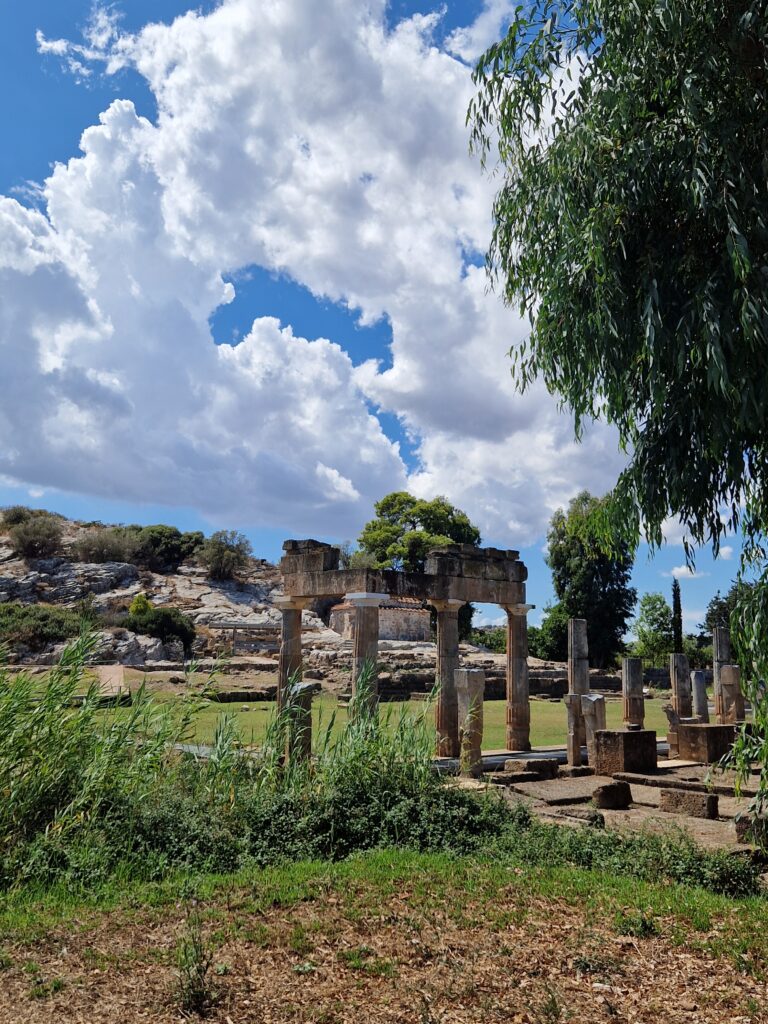
Goddess Artemis, Cult and Sanctuary
The sanctuary at Brauron is one of the most significant archaeological sites in Attica. It was expanded to its final form around the 6th century BC. This was the site of one of the most important festivals in antiquity, the Βραυρώνια/Brauronia, which was dedicated to the Olympian goddess Artemis.
The festivities were held every five years and were considered almost as important as the Eleusinian Mysteries, which we looked at in a previous article.
Artemis is one of the most versatile and fascinating goddesses in Greek mythology. Her cults were spread throughout the ancient Greek world. She was associated not only with hunting and wilderness but also with childbirth, women’s health, children, and youth, especially girls before they reached adulthood. At Brauron, Artemis seems to have been worshiped primarily in this role.
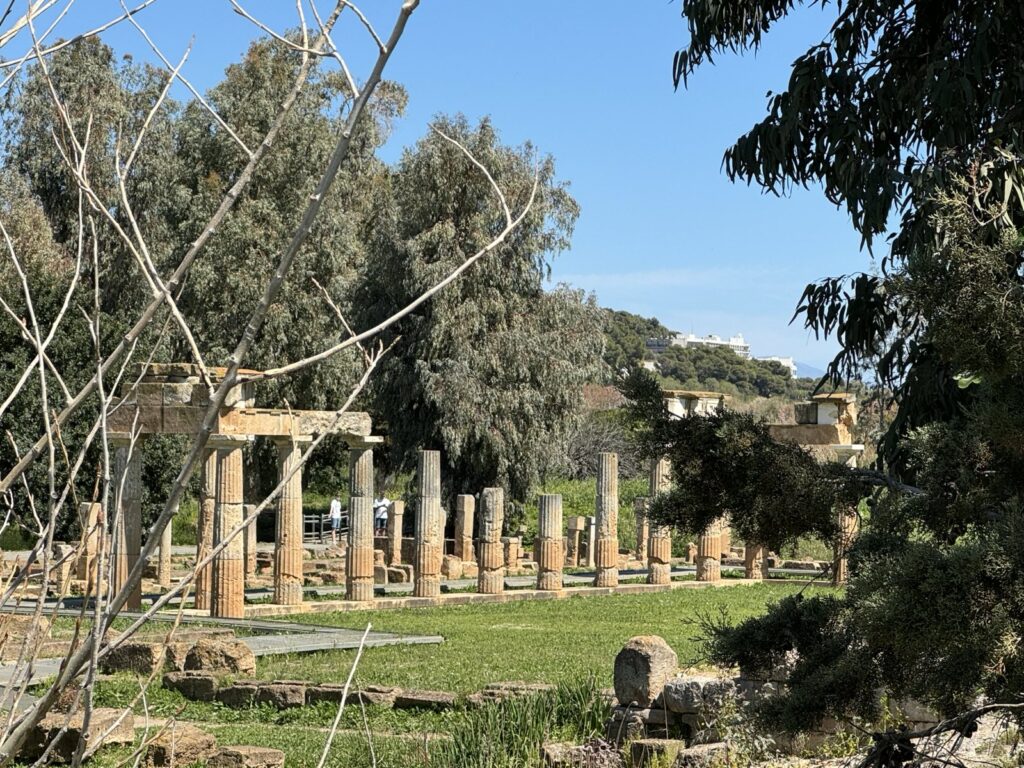
An important element of the Brauronia cult was the ritual ceremonies and processions of young girls approaching marriageable age. The girls were called άρκτοι (arktoi)/bears, symbolizing their transition from childhood to adulthood.
They honored Artemis through sacred dances, dressed in saffron-colored garments. They ran races and made offerings to the goddess. Sometimes, nudity was part of these rites of passage, symbolizing the girls’ preparation for adult life.
Before getting married, the girls also sacrificed their childhood toys to Artemis, and many of these objects have been found in the temple area.
During the later classical period, Artemis was also identified with Σελήνη/Selene, the personification of the moon. She was often said to wander in forests and mountains, accompanied by her nymphs. The Roman equivalent of Artemis is Diana.
Artemis temple
The temple dedicated to Artemis itself was built on the slope of a 78-foot-high hill where a spring, considered sacred, still flows. Today, only the foundations of the temple remain, as it has been destroyed over time by wars and natural disasters.
In the 15th century, the Byzantine chapel of Agios Georgios was built on the same site, partially carved into the rock. Nearby, the remains of an ancient church dated to the 5th century AD have also been found.
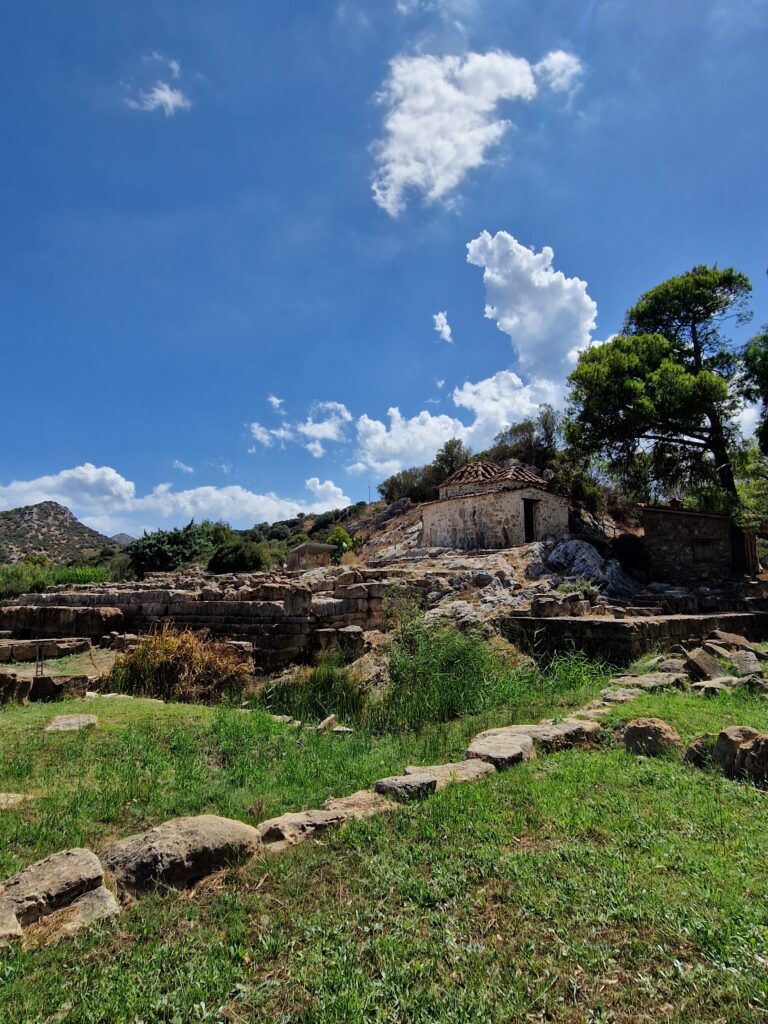
Stoa – The Colonnade
North of the temple, around the 5th century BC, what now dominates the site was built: a στοά/stoa – a colonnade or open hall, in the shape of a “Π” (Pi). It served as a central gathering place during religious festivals and promoted a sense of community among those honoring Artemis. Important ceremonies were performed here, and meals were held in honor of the goddess.
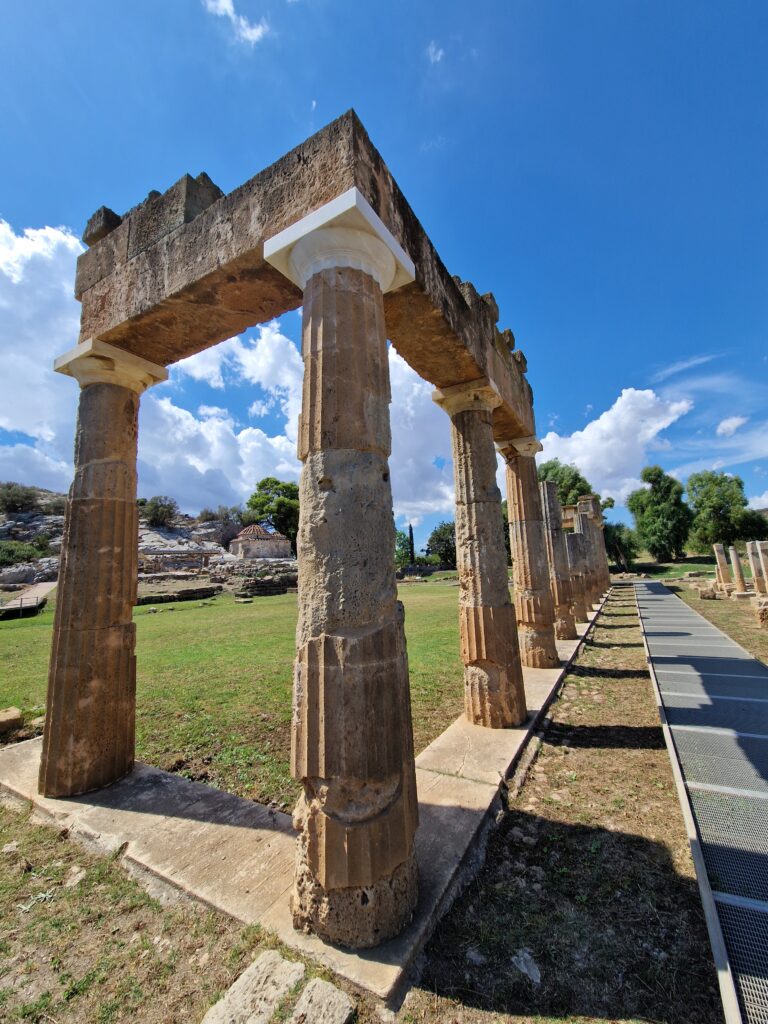
Adjacent to this was a smaller stoa that housed several rooms where the arktoi girls lived. Although this smaller stoa was never fully completed, it was actively used during the festivities in classical times. Several of the girls’ names have been found as inscriptions on the remains of the walls in this stoa.
In both colonnades, gifts and small statues were also placed, which parents offered as sacrifices when they put their children under the goddess’s protection.
Iphigenia’s tomb
The remains of what is said to be the mythological tomb of Iphigenia can be seen just east of the Temple of Artemis. The tomb was originally located inside a cave, whose roof collapsed already during the Classical period.
Iphigenia was the daughter of King Agamemnon and Queen Clytemnestra in Greek mythology. As told in the Iliad, before the Greeks could sail to Troy, the goddess Artemis demanded that Iphigenia be sacrificed to ensure favorable winds for the fleet.
At the last moment, Artemis saved Iphigenia and took her to the land of Tauris, on the coast of the Black Sea. With the help of her brother Orestes, she later returned to Greece. According to one version of the myth, retold by Euripides, Iphigenia arrived in Brauron, where she became the high priestess of Artemis.
A cult site since the Stone Age
Numerous archaeological finds have shown that the area of Brauron has been inhabited since ancient times. The hill and the sacred spring have played an important role in religious rituals as early as the Neolithic period and throughout the Bronze Age. The cult of Artemis is believed to have emerged and developed around the 9th century BC.
Unfortunately, much of the sanctuary was destroyed during the Persian invasion in 480 BC, but the site was partially rebuilt later during the Classical period. The festivities at Brauron began to decline after the 3rd century BC.
Sanctuaries near Athens: the museum in Brauron
The Archaeological Museum of Vravrona is located just a few hundred meters from the sanctuary. The permanent exhibition showcases finds from the excavations of the temple area and other nearby archaeological sites.
The exhibition focuses on the history of Brauron, from prehistoric settlements to ancient monuments, as well as traditions linked to the cult of Artemis. The museum also houses antiquities and finds from surrounding municipalities.
The museum has five exhibition halls, an inner courtyard, as well as storage and workshops for the preservation and conservation of archaeological finds.
Opening hours: Every day except Tuesday, 08:00 – 15:30.
You can download the museum guide in PDF format here (English/Greek) >>
The wetland of Brauron
The natural riverbed environment that still dominates the area around the mouth of the Erasinos River provides the land with an abundant water supply, and the Brauron area today forms an important wetland protected under Natura 2000, a European network for biodiversity conservation.
The Brauron wetland is home to a wide variety of plants and animals, many of which are very rare. Many herons find refuge here, while rare birds of prey nest on the surrounding hills. This ecological richness makes the area a central point for both history and nature conservation in the region.
Artemis – a versatile goddess
Artemis was a complex and versatile deity in Greek mythology. Her cults varied depending on the location and local traditions. In Ephesus, on the coast of Asia Minor, she was worshiped as a maternal fertility goddess. Her temple, the Artemision, was one of the Seven Wonders of the Ancient World and an important center for the veneration of the goddess as a protector of motherhood and fertility.
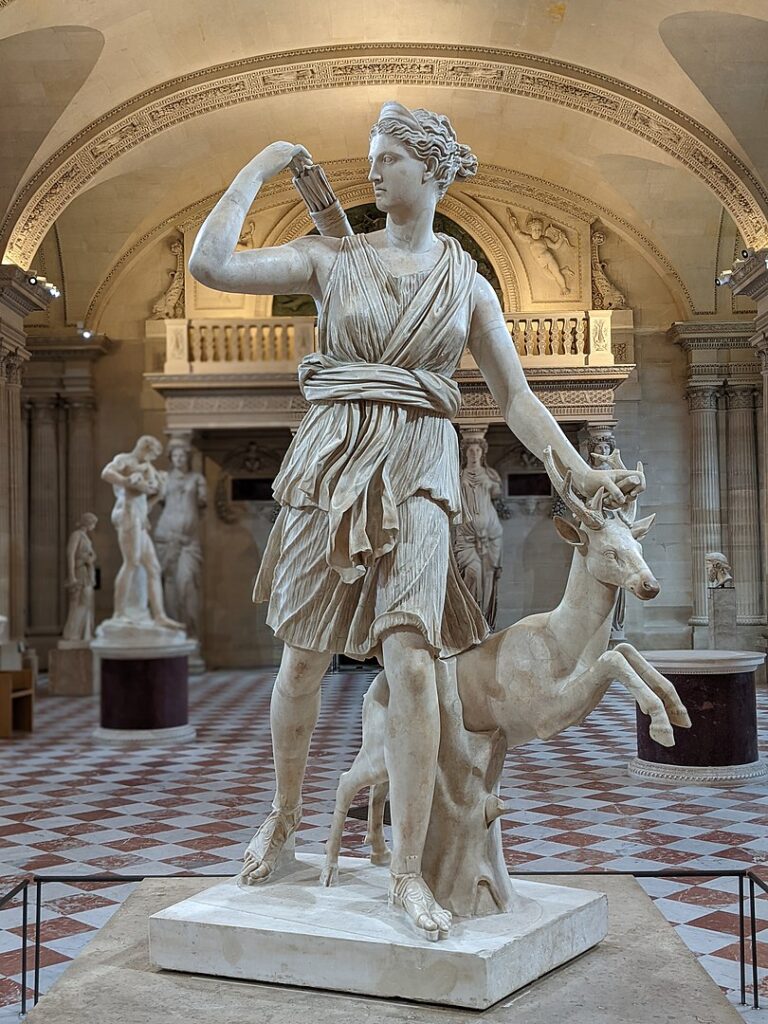
In Sparta, she appeared as Artemis Orthia, a strict goddess who oversaw the education and physical training of young Spartans. Here, her role was closely tied to discipline and strength, qualities that were important in Spartan culture.
On the island of Delos, where according to mythology she and her twin brother Apollo were born, grand festivals were held in their honor. The island was a significant religious center, and Artemis was worshiped here as a powerful deity associated with birth and rites of passage.
Artemis was worshiped in many different ways, but everywhere she remained a powerful symbol of nature’s wild beauty and the female life cycle. She was a central figure in ancient Greece’s religious life and one of the oldest deities to be worshiped.
Brauron – Βραυρώνα
Sources
Greek Wikipedia, Greek Ministry of Culture, archaiologia.gr, Archeological Museum in Brauron
Latest posts
- World Heritage in Greece 2025, complete UNESCO list [updated]
- Hidden waterways of Athens, part 1: Podoniftis in the concrete jungle
- The thermal springs of Loutraki – where the water of life never ceased to flow
- Ancient Greece and the timeless mystery of dreams
- Greek folk instruments, part 1 – a visit to the museum in Plaka
